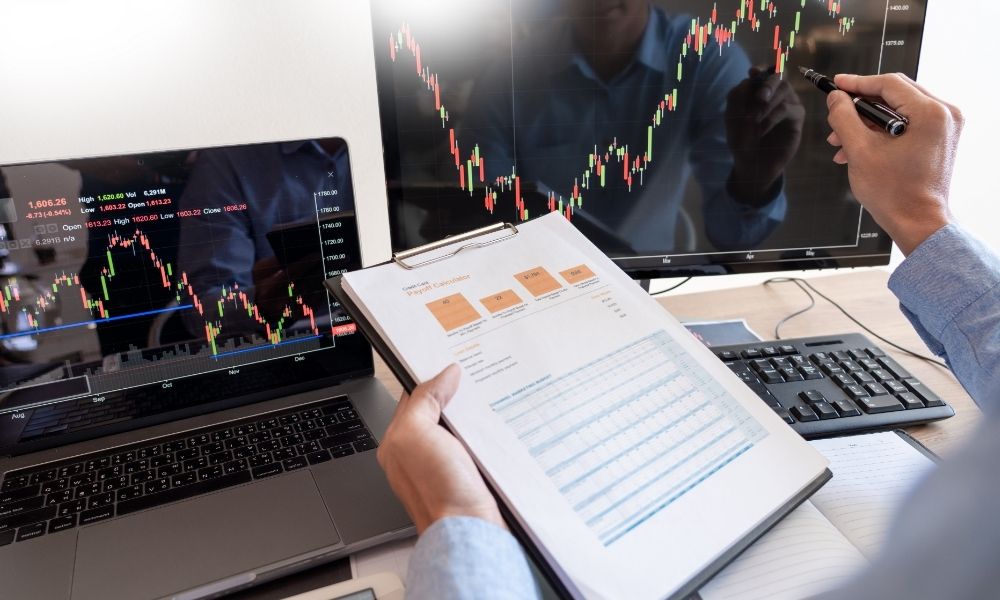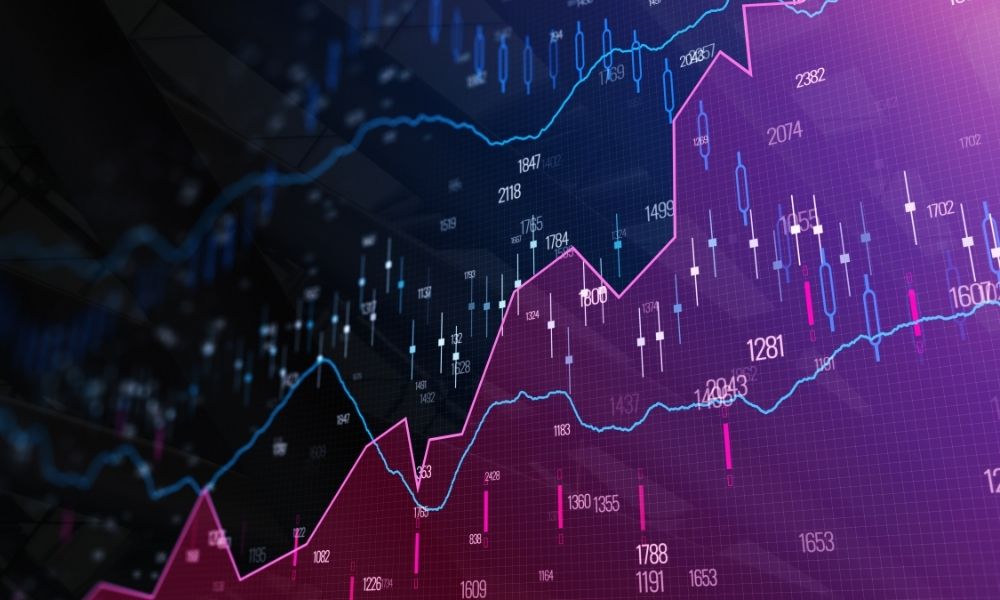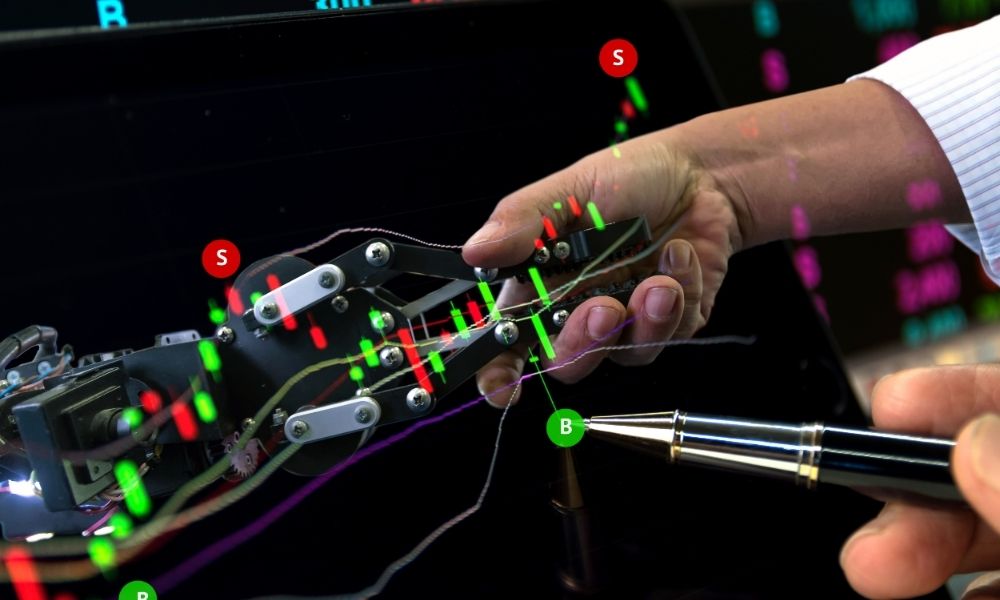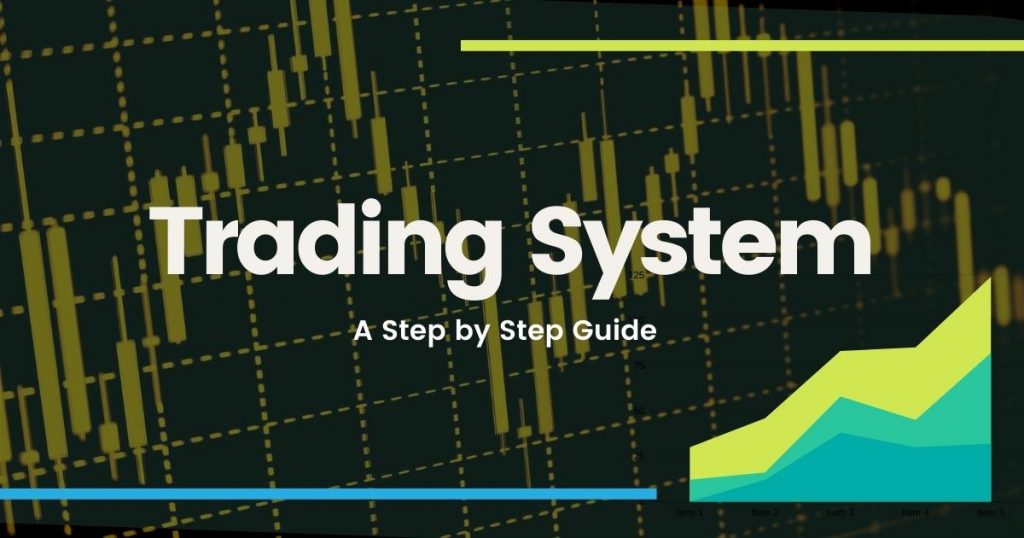When it comes down to the fundamental principles of successful Forex trading, a Forex trading system that is your own is crucial. Yes, you can copy others but remember this, Forex is an emotional game. It requires emotional maturity and self-control especially over strong emotions such as F.O.M.O. If you are not in the right space of mind, you could and will lose a lot of money.

Automated trading systems, Robots, or Expert Advisors – whatever you want to call them are almost all based on a specific trader’s appetite; you could get lucky and make money with their trading system for Forex.
In fact, for more advanced Forex traders, we encourage you to copy their Forex trading systems but as a beginner, we highly advise you not to!
The last thing you ever want to experience is this incredible emotional breakdown that happens to those that tried and failed just because you had “had a feeling” that “this would be it!” This is it! It is the worst feeling in the world, trust me! Imagine, you were on top of a very tall tower, you were confident that you were safe – only for someone to take away a small brick, and see you come tumbling down as if you were nothing.
Listen, as much as we would love for you to make money this very instant. The reality is, Forex is a long-term game.
In order to be really successful in this, to achieve the freedom, the lifestyle that you want; it’s going to take patience and experience. We want to help you gain that experience without going through the pains, the mistakes that are sometimes so bad – they could literally destroy a young trader ambition for his/her future.
All Types of Forex Trading Systems
A Forex trading system is essentially your mindset or your process coupled with your strategic indicators for execution where when you see a signal in the market, you will either buy or sell a currency pair.
Think of it as you being in Iron Man’s helmet, there’s a central target i.e. the Forex global marketplace, and on the side panels are your indicators such as your RSI (Relative Strength Index), Bollinger Bands, and Moving Average – these give you a ‘go’ or ‘stop signal to enter or exit a trade.
Two Important Questions to Ask Yourself First:
Question 1: Are you a more active trader? In life, are you a steer, straight-forward person? Does the thrill of potentially earning x10 your investment gives you an adrenaline rush or joy?
- If yes, then you are considered an aggressive trader or “high risk.” You have the potential to earn or lose 10x of your investment in a very short amount of time.
Question 2: Are you more of a passive trader? In life, do you choose the safer route? Does it give you assurance and comfort that what you choose is safe and sure?
- If yes, you are what most traders are called “passive.” You are in this for the long term, you want stable, increments of consistent profits over the years. Generally ideal for mechanical system users.
When you have identified which personality type you are, you can now more confidently build your own Forex system based on either your own appetite, one of the systems below, or a combination of all of them:
Mechanical Systems
A Mechanical System or what some call systematic trading is a process full of rigid rules and signals. Its purpose is to remove the need to guess or predict where the market is heading. Here’s an idea of what rules and signals look like:
- Buy when a fractal candle closes because this is telling you the direction of your target’s price or market.
- Place stop-loss above the mark where a recent swing high has happened.
- Buy at-market value when a target’s price goes above the 100-day moving average.
- Another rule: Buy at-market value when the RSI goes below 25.
- And at last: Buy at-market value when a 5-minute candle closes just above your wedge pattern that has been confirmed with the increase of volume.
Compared to a discretionary system that requires you, years and years of pattern-recognition, chart time, and actual hands-on experience. A mechanical system uses rigid rules and signals to remove uncertainty, intuition, or “best-guesses” meaning does not relate to context such as announcements, fundamentals, speculation, or new.
Advantages of a Mechanical System
- Safety: with that rigid rules and signals that you’ve placed. This cancels the need to guesswork a potential opening of the market.
- Active Automation: those “rigid rules and signals” can easily be expanded or removed. And it’s easy to efficiently backtest your mechanical system.
- Fixed Risk: because of all the work that you’ve put in, the restrictions and signals. You know how much risk there is and your chances of profiting. Imagine, knowing you will only lose 20% and win 80% of your trades.
- Emotionless Trading: arguably one of the biggest advantages of mechanical systems is the ability to turn off your emotions and trade like a Robot. No emotional swings, no drama, no lack of sleep affecting you. Just you and your profits.
Disadvantages of a Mechanical System
- Incorrect Backtesting: the major of Forex traders do backtest correctly. If you want to accurately produce results for your backtesting, use data.
- Forex Volatility: the “rigid” rules and signals that you have set up are not permanent, most rules and signals must be changed every now and then.
- Constant Building of Mechanical Forex Systems: due to the Forex market’s nature of always changing, you will constantly have to build or rebuild your mechanical systems. Some find this difficult whilst others love this process.
Discretionary Systems
A discretionary Forex trader constantly uses and analysis fundamental factors that may affect the price of a currency. Fundamental factors such as central bank announcements, job statistic announcements, new monetary policies, the major events or news that affects your targeted country’s economics and geopolitical influence, living standard, climate, and other various factors.

As a discretionary Forex trader, whenever you open position on a currency or commodity; the position was based on the context of your targeted country’s status usually on a long term perspective. Here are some example of discretionary trading:
Example 1: The United States imposes strict tariffs on the European Union, making it incredibly expensive for businesses to import and export commodities. What impact do you think it will have on the EUR/USD pair? Based on fundamental research, years worth of research, historical reactions, and more – how has the market generally reacted to such a restriction?
Example 2: When a global event such as a worldwide pandemic has happened, which has destroyed the livelihood of thousands of brick and mortar businesses, has put thousands if not millions of workers out of jobs, and restricted supplies and movement.
Again, based on historical data, how has the market reacted? What is the general timeline? When is the peak? When is the recovery period? How has the market reacted in the past to the recovery period? Is it positive or negative? If it’s positive, by how much? 300 PiPs? 2,000 PiPs? How are commodities such as gold reacting? And so on, and so on.

Think of it this way. Compared to a Forex trader that uses a mechanical system that scalps the market for short-term gains. A Forex trader that uses a discretionary system, is someone who is in this for the long-term haul. This is essentially your career. More or less guaranteed you will be a multi-millionaire by the time you retire.
Advantages of a Discretionary System
- Experienced Based: The fact that you are using fundamental factors and experience gives you a higher chance of success.
- Easily Adaptable: You can change your strategy. You’re still making consistent profits but now, you’re slowly incrementing that.
- Secret Insights: Due to the simple fact that you are researching and learning decades of knowledge, market fluctuations, and market reactions – you very oftentimes discover patterns in the market that know and nobody else.
Disadvantages of a Discretionary System
- Judgment Based: A discretionary system cannot be automated or backtested easily. There must always be a decision based on judgment to be made.
- Difficult to Master: You need years of experience full of failures and successes to confidently develop a discretionary system that tracks potential profits and losses in advance especially in the early stages of a decision.
Automated Forex Trading System
An automated Forex trading system, some may argue is just another version of a mechanical Forex system but it isn’t. It’s more.
Not only do you add factors such as more Expert Advisors and/or Robots meaning you copy their systems, regardless of whether they’re active or passive, and add them into your own.
It is a fact, that 75% of all Forex trades are done automatically.
Despite many amateur Forex traders considering this to be a risky system with multiple built-in mechanisms to signal market entry and minimize losses. You stand to gain more than lose just like the retailer brokers who all use some form of automation and A.I.

Advantages of an Automated Trading System
- Control: You reduce if not minimize your emotions when trading. You get to be more fundamental, more analytical in your decisions compared to impulsive, amateur decisions.
- Wide Perspective: Due to the nature of automated Forex systems, it is a requirement that your research, data, rules, signals are 100% absolute with no potential for misinterpretations.
- Remember: a machine does not have emotions, it will never make guesses. You must tell it what to do.
- Self Discipline: By definition, your automated Forex trading system has self-discipline. It will never be affected by a volatile market. Also, it cannot feel extreme emotions such as F.O.M.O. or be greedy. It will always follow what you told it.
- Entry Speeds: When a signal hits, it will automatically enter the market. You don’t have to worry about missing out on PiPs because your computer lagged at the last minute. It will enter for you, it will stop for you and it will protect you.
Disadvantages of an Automated Trading System
- System Failure: By system, I mean, is the trading platform that you are using server-based or online – or are you on your computer and you’re essentially streaming data to the server.
- Imagine, you’re streaming and you lost your connection and there was a sudden, massive spike in the market.
- Must Be Monitored: It can be annoying to “babysit” your trades as there’s emotion involved in it as well as added stress to hardware malfunctions such as power loss, your computer crashes or connectivity issues.
- Constant Optimization: It’s a very volatile market and you need to always tweak your automated system to match the volatility and potential spikes.
How Do You Build Your Own Forex Trading System: A Step By Step Guide
As a general rule, we advise young traders to always start using a mechanical Forex system. This will give you the experience that you need to start mastering fundamental Forex skills necessary for large transactions. It will also give you the time to develop your analytical skills when it comes to Forex trading signals.

General rule 2, tame your psychological barriers as soon as possible. It’s not a joke. Emotions such as fear, greed, anger, or a combination of all of those can literally destroy your career as a trader. This is why a lot of Forex brokerage and Forex traders all recommend you use a demo account. This will allow you to feel the extreme effects of those emotions.
Step 1: Choosing Your Ideal Time Frame
Time frames refer to the trading windows of 1 minute, 5 minutes, 30 minutes, 1 hour, 1 day, 1 week, 1 month, and years. Remember the active and passive trader section above?
- If you’re active, you’re usually using time frames of 1m, 5m, 30m, 1hr. This means you are looking for fast, turnovers of your money.
- If you’re passive, you’re using time frames of 1d, 1week, 1 month, and years. This means you’re what they call a “day” or “swing” trader.
Step 2: Use Indicators that Help You Identify and Analyze Trends
Indicators such as Stochastic, RSI, ADX, Ichimoku, MACD, etc – as a general rule with indicators, limit them to 2-5. You do not want to be overwhelmed when it comes to making a decision.
- If you try and use more than 5 indicators, you will experience analysis paralysis.
Step 3: What’s Your Risk Factor
How much are you willing to risk? While Forex isn’t gambling, there is an element of chance in it. Let me ask you if you only had $1,000 to use as your Forex money. How of that are you willing to lose? $200? $500? if it’s only $200, this means you are willing to risk 20% of your overall money. Now, as a general rule to the actual trading, most agree that you should only risk 1-2% of your money per trade.
Step 4: Entries and Exists – Risk/Reward Ratio
Now, this depends entirely on your appetite. Some traders love to enter at the open of the market. Others like to trade when they receive a good signal and some want very clear indications meaning very near their resistant, support levels. as a general rule, the risk/reward ratio should be 1/3 if not 1/4.
Step 5: Rules are Your Laws
Never, ever break your rules. Consider them to be your laws, if you disobey – you will be punished. This is not to insult you, but we have seen so many traders set up these fantastic trading rules and signals only for them to break during a crucial, emotionally-fueled trade. Listen, Forex is making consistent profits, not a one-time transaction. Incremental, consistent profits are key to your success as a Forex trader.
How Do You Automate a Forex System
Now that you’ve built your very own Forex trading system, composed of your appetite and fundamental processes of a mechanical or discretionary system (or combination of both) – you will need a program, a software to create Robots and Expert Advisors that will all follow your commands and never fail in their execution. No fear of losing out of trades based it’s online, no risk of hardware malfunctions.
Let me introduce you to EA Studio or Expert Advisor Studio a software created by Forex Software Ltd.
This is software is the result of over 15 years of practical experience in building software that helps you not only automate your trades but actually helps you build the Expert Advisors and Robots that you need using real-world historical data.

And all the charts, stats that you will ever need with an intuitive, for non-programmers, easy to use, and easy to export 100% native MQL code that’s fully compatible with your trading platform such as MetaTrader.
If you are looking for a software that builds your automated Forex trading system, fast and easy then EA Studio is for you. It took out all the guesswork, the frustrating, confusing language and transforms it into an accessible, easy to use, and intuitive platform. With just a few clicks you have your automated Forex trading system, full of all the Expert Advisors and Robots that you could ever want.
And as always, as part of our commitment to your success, if you encounter problems, issues, or difficulties in using the software, we have a reliable support team, that’s ready to help you 24/7.
Remember, our goal here is to help you make money by building the necessary skills that you need and by guiding you on what to do and what not to do in certain scenarios.
Conclusion
Now, wait! I know you can feel it.
This burse of confidence that you feel because you have just learned how to build your very own Forex trading system. While that’s great and all – if you don’t have a solid foundation on the basic principles of Forex, everything that you have just learned, will not work and you will join 65% of all traders that have failed.
Again, our goal here is not to destroy your confidence, we want you to succeed. We want you to make money as fast as humanly possible but we want you to do it right!
No shady tricks that if you do this, you’re guaranteed to make money – if you want to be a long-term profitable Forex trader, for yourself or for your family – you need to have the foundational skills that all expert Forex traders have.
Remember the tower that I illustrated at the beginning of this article, remember the brick? That even if you feel you are the most secure, safe at the top of the tower meaning your trade. Someone can easily just take a brick and see you come tumbling down as if you were nothing. This is the reality of the volatility of the Forex global market, you can make $1,000 in an hour but you could lose that $1,000 if you don’t have your basic, fundamental principles in check.
Here’s the best Forex advice we can give you. Take everything that you have learned here about Forex trading systems and all the basic fundamentals of Forex found here on our website then:
- Open a demo account, familiarize yourself with trading itself, and the trading platform that you are using. Everything from menus, buttons, indicators, oscillators, and more.
- Use the Forex strategies that we have here on our website or Google ‘Forex Strategies’ – pick 1, and experiment with it to its fullest strategic potential with varying scenarios of difficulties, situations, market announcements, and more.
- Once you gain the necessary experience; now, do it for real. Use your money and trade Forex currencies.
- With the real-world experience that you’ve gained, build the Forex trading system that you feel comfortable with and automate.
How to build a Forex trading system?
As a general rule, we advise young traders to always start using a mechanical Forex system. This will give you the experience that you need to start mastering fundamental Forex skills necessary for large transactions. It will also give you the time to develop your analytical skills when it comes to trading signals.

